Relaxercise – Feldenkrais made Easy by David Zemach-Bersin
$22.00
Product Include:
File size:
Relaxercise – Feldenkrais made Easy by David Zemach-Bersin
**More information:
Get Relaxercise – Feldenkrais made Easy by David Zemach-Bersin at Salaedu.com
Description
In order for you to take advantage of your body’s extraordinary ability to improve itself through sensory motor learning (the way our bodies learn naturally, through trial and error,) you must give your brain an opportunity to detect and reduce the unnecessary, counterproductive muscular effort in your body.In 1942, Dr. Moshe Feldenkrais, a brilliant and respected physicist, faced one of the most critical challenges of his lifetime. Because he had suffered a series of sports related knee injuries, he was now painfully crippled. Medical specialists offered him surgery, but had given him a disheartening prognosis. Feldenkrais chose not to undergo the proposed surgery. Instead, he began to study neurology, anatomy, biomechanics and human movement development. He knew that in order to walk again, he would have to find a way to create new neurological connections between his nervous system and his muscles. After two years of research and experimentation, he emerged victorious. He had developed a way to improve his body by activating the natural power of his brain and nervous system. Inspired by his personal success, Feldenkrais continued to explore the profound link between the brain and body, and developed hundreds of unique exercises designed to access the movement learning centers of the brain.
Research in neurophysiology has shown that when we exert a lot of muscular effort, it is impossible for our brain to make the sensory distinction needed to improve our neuromuscular organization. This is why conventional exercise, with its reliance on muscular effort, force and speed, actually restricts your brain’s ability to work on your body’s behalf. When we use minimal muscular effort, our brain is free to make important sensory distinctions.
For example, if you hold a heavy object, you have to exert a considerable amount of muscular effort. If a fly lands on the heavy object as you’re holding it, you cannot feel the very slight increase in weight. But if you hold something that is very light, like a feather, you do not need to exert a lot of muscular effort. If a fly lands on the feather, you can easily feel the increase in weight because your brain is free to sense even the slightest difference or change.
Relaxercise® exercises, which we developed from Feldenkrais’ work, apply the powerful neurological rule that less muscular effort produces more sensory learning and physical improvement. The following exercise involves slow, easy movements that activate your brain’s movement centers and generate a flow of valuable information between your brain and your muscles. Automatically, as if by magic, tension, strain, fatigue and discomfort will disappear as your neuromuscular system reprograms itself for better health.
For this exercise you will need a hard or firmly cushioned chair.
Use these Relaxercise® Keys:
• Go slowly.
• Make each movement small and easy.
• Relax as much as you can.
• Rest briefly after each movement.
Starting position: Sit on the forward part of the chair and rest your hands on your thighs. Rest your feel flat on the floor, shoulder width apart, directly below your knees.
Repeat each of the following movements 4 to 8 times.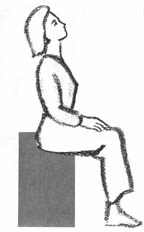
1) Slowly and comfortably raise your head and eyes as if to look up toward the ceiling. Then return to the starting position (facing forward) and relax.
• Don’t stretch or strain your neck or back. Your flexibility will increase automatically.
• As you look up, let your back arch slightly.
• Exhale as you do each movement.
• As you look up, notice exactly how far above your eyes can see
without feeling any strain. Later on, you can measure your
improvement.
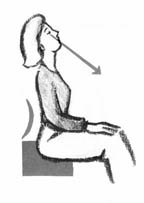 2) Simultaneously, raise your head and arch your back a little, while looking downward with your eyes.
2) Simultaneously, raise your head and arch your back a little, while looking downward with your eyes.
• Go slowly. This movement will soon be easier and more
comfortable.
• The movement of your head and neck is limited because your head and eyes are moving in opposite directions.
• Relax your eyes, neck and shoulders.
3) Simultaneously, raise your head and eyes to look up toward the ceiling while arching your back.
• Is your back arching more easily?
• Can you see a little higher without any strain?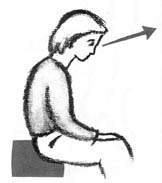
4) Very slowly lower your head as if to look down toward the floor. Then return to the starting position and relax.
• Make each movement small and easy.
• When you look down, let your back get round.
• Exhale as you do each movement.
• Relax your neck, chest and shoulders.
5) Simultaneously, lower your head and round your back, while raising your eyes to look upward.
• Notice that the movement of your head and chest is limited because your head and eyes are moving in opposite directions.
6) Again, raise your head and eyes to look upward, while arching your back.
• Notice that your eyes can see a little farther upward without strain!
• Feel the middle and upper part of your back beginning to arch a little more.
7) Let your head hang down, so your chin rests comfortably near your chest. Then slowly arch your back.
• Relax your neck, stomach and shoulders.
• Notice that your pelvis tilts forward slightly when you arch your back.
• Exhale while doing each movement.
8) And once more, raise your head and eyes to look upward while arching your back.
• Feel your spine arching.
• Notice how far upward you can look now, without feeling any strain.

9) Slowly, lift your head and eyes to look upward, while arching your back. Then slowly lower your head and eyes and round your back.
As you look upward, notice:
• Your shoulder blades move closer together.
• Your stomach relaxes and moves forward.
• Your pelvis tilts forward a little.
• Your chest lifts and moves forward.
• Your body gets a little taller.
As you look downward, notice:
• Your chest flattens.
• Your shoulders and back are rounded.
• Your pelvis tilts backward a little.
• Your body gets a little shorter.
10) Turn your upper body comfortably to the right and stay there. Then alternately raise your head and eyes to look upward while arching your back, and then lower your head while rounding your back.
• Remain turned slightly to the right.
• Pause to rest when your head and eyes are lowered.
• To make the movement easier, lift your left hip slightly as you look up.
• Relax your neck, shoulders and legs as much as possible.
11) Turn your upper body comfortably to the left and stay there. Then alternately raise your head and eyes to look upward while arching your back, and then lower your head while rounding your back.
• Remain turned slightly to the left.
• As you look upward, lift your right hip slightly.
• Relax your neck, shoulders and legs as much as you can.
12) Slowly turn to the right, while arching your back and looking upward. Then, while lowering your head and rounding your back, bring your body back through the starting position and turn slowly to the left, while arching your back and looking upward. Lower your head and round your back as you bring your body through the starting position again and repeat the movement.
• This movement is smooth and continuous.
• Notice that when you turn to the right and look upward, your left hip rises a little. And when you turn to the left and look upward, your right hip rises a little.
• Notice that when you look upward, your shoulder blades move closer together. And when you look downward, your shoulder blades move farther apart.
• Arch your back as much as you can without feeling any strain.
• Round your back as much as you can without feeling any strain.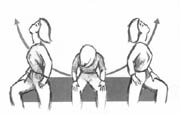
13) Measure your improvement. Lift your head and eyes to look upward while arching your back.
• When you look up, notice how much farther you can see without any strain!
• Feel your entire spine bending easily!
• Feel the difference!
And now, relax. Feel how your weight is balanced, resting comfortably on your pelvic sitting bones. Notice that your posture is more upright. Your sitting posture has improved because the natural arches of your spine have been enhanced and restored.
You have completed “A Healthy Spine”. When you stand up and walk around, feel the difference in your posture, flexibility and ease of movement.
Health and Medical course
More information about Medical:
Medicine is the science and practice of establishing the diagnosis, prognosis, treatment, and prevention of disease.
Medicine encompasses a variety of health care practices evolved to maintain and restore health by the prevention and treatment of illness.
Contemporary medicine applies biomedical sciences, biomedical research, genetics, and medical technology to diagnose, treat, and prevent injury and disease,
typically through pharmaceuticals or surgery, but also through therapies as diverse as psychotherapy, external splints and traction, medical devices, biologics, and ionizing radiation, amongst others.
Medicine has been around for thousands of years, during most of which it was an art (an area of skill and knowledge) frequently having connections to the religious and
philosophical beliefs of local culture. For example, a medicine man would apply herbs and say prayers for healing, or an ancient philosopher and physician would apply bloodletting according to the theories of humorism.
In recent centuries, since the advent of modern science, most medicine has become a combination of art and science (bth basic and applied, under the umbrella of medical science).
While stitching technique for sutures is an art learned through practice, the knowledge of what happens at the cellular and molecular level in the tissues being stitched arises through science.
1 review for Relaxercise – Feldenkrais made Easy by David Zemach-Bersin
Add a review Cancel reply
Related products
Health – Fitness – Medical
Health – Fitness – Medical
Health – Fitness – Medical
Shock »Irregular Energies: The Initiate of All Disease by Sara Allen
Health – Fitness – Medical
Health – Fitness – Medical
Health – Fitness – Medical

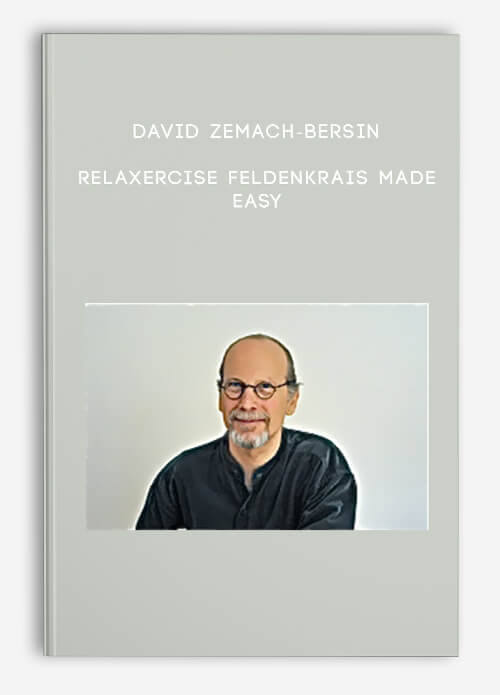

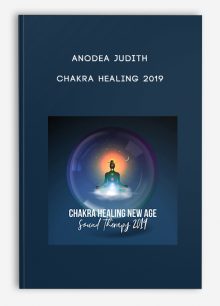
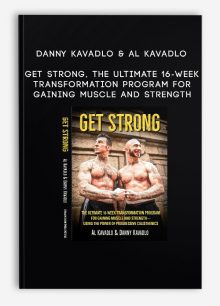

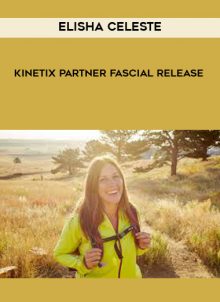

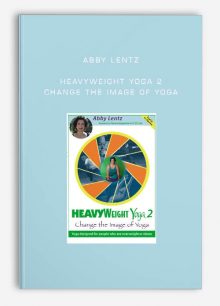
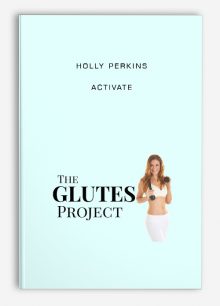
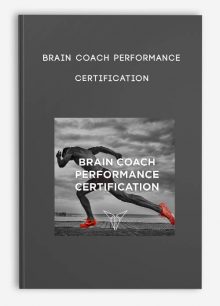
king –
We encourage you to check Content Proof carefully before paying.“Excepted” these contents: “Online coaching, Software, Facebook group, Skype and Email support from Author.”If you have enough money and feel good. We encourage you to buy this product from the original Author to get full other “Excepted” contents from them.Thank you!